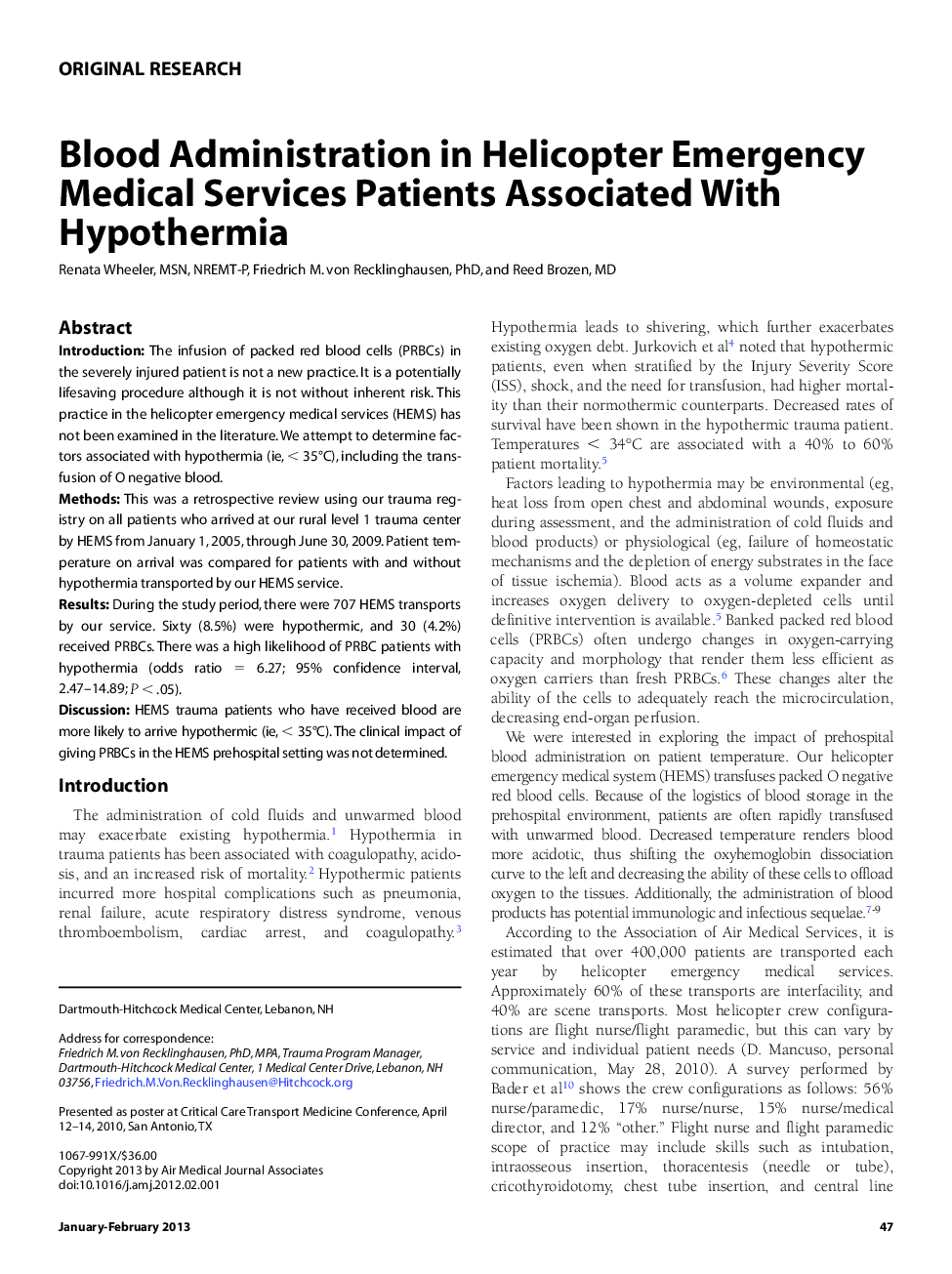| Article ID | Journal | Published Year | Pages | File Type |
|---|---|---|---|---|
| 2604837 | Air Medical Journal | 2013 | 5 Pages |
IntroductionThe infusion of packed red blood cells (PRBCs) in the severely injured patient is not a new practice. It is a potentially lifesaving procedure although it is not without inherent risk. This practice in the helicopter emergency medical services (HEMS) has not been examined in the literature. We attempt to determine factors associated with hypothermia (ie, < 35°C), including the transfusion of O negative blood.MethodsThis was a retrospective review using our trauma registry on all patients who arrived at our rural level 1 trauma center by HEMS from January 1, 2005, through June 30, 2009. Patient temperature on arrival was compared for patients with and without hypothermia transported by our HEMS service.ResultsDuring the study period, there were 707 HEMS transports by our service. Sixty (8.5%) were hypothermic, and 30 (4.2%) received PRBCs. There was a high likelihood of PRBC patients with hypothermia (odds ratio = 6.27; 95% confidence interval, 2.47–14.89; P < .05).DiscussionHEMS trauma patients who have received blood are more likely to arrive hypothermic (ie, < 35°C). The clinical impact of giving PRBCs in the HEMS prehospital setting was not determined.
